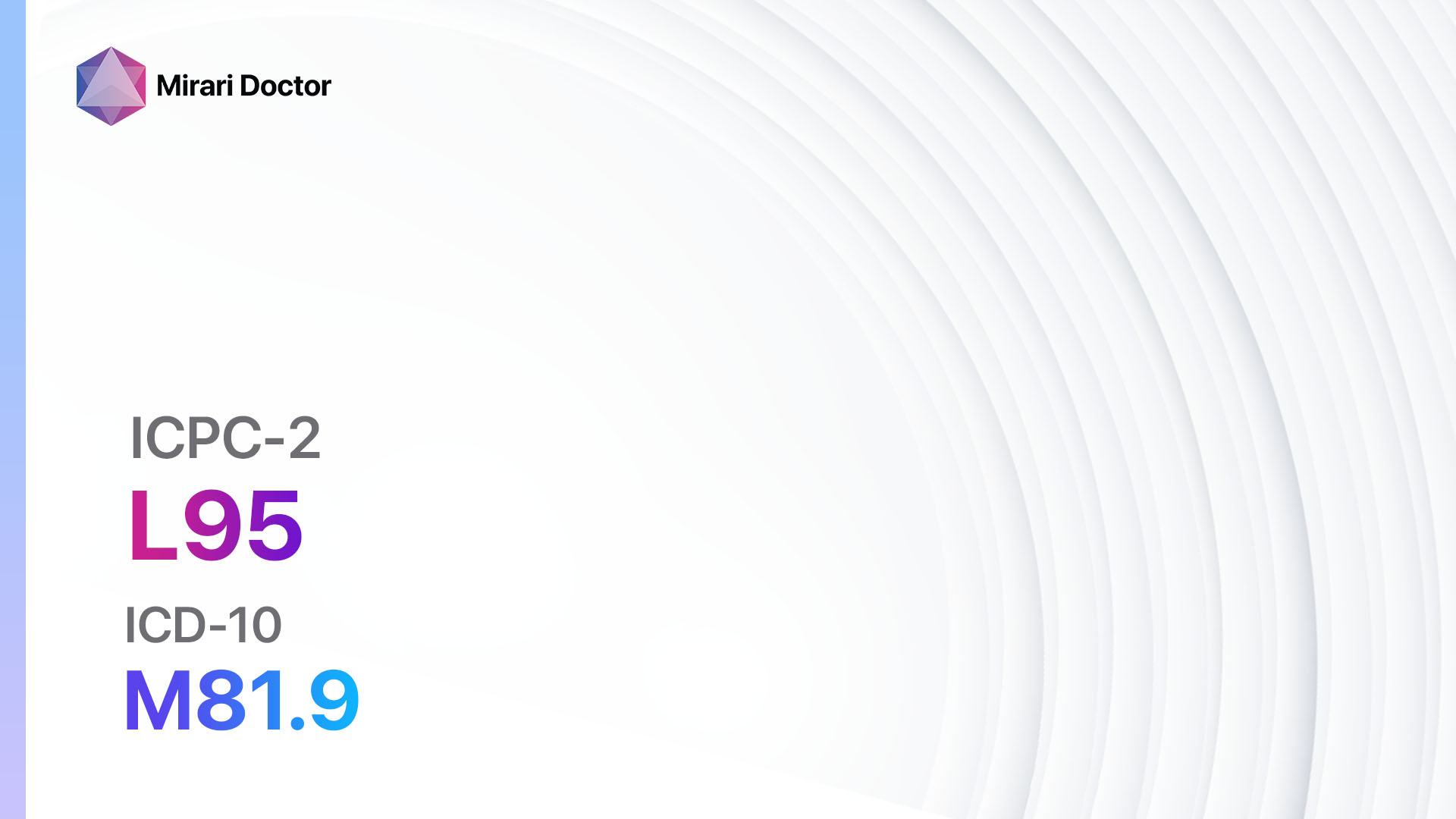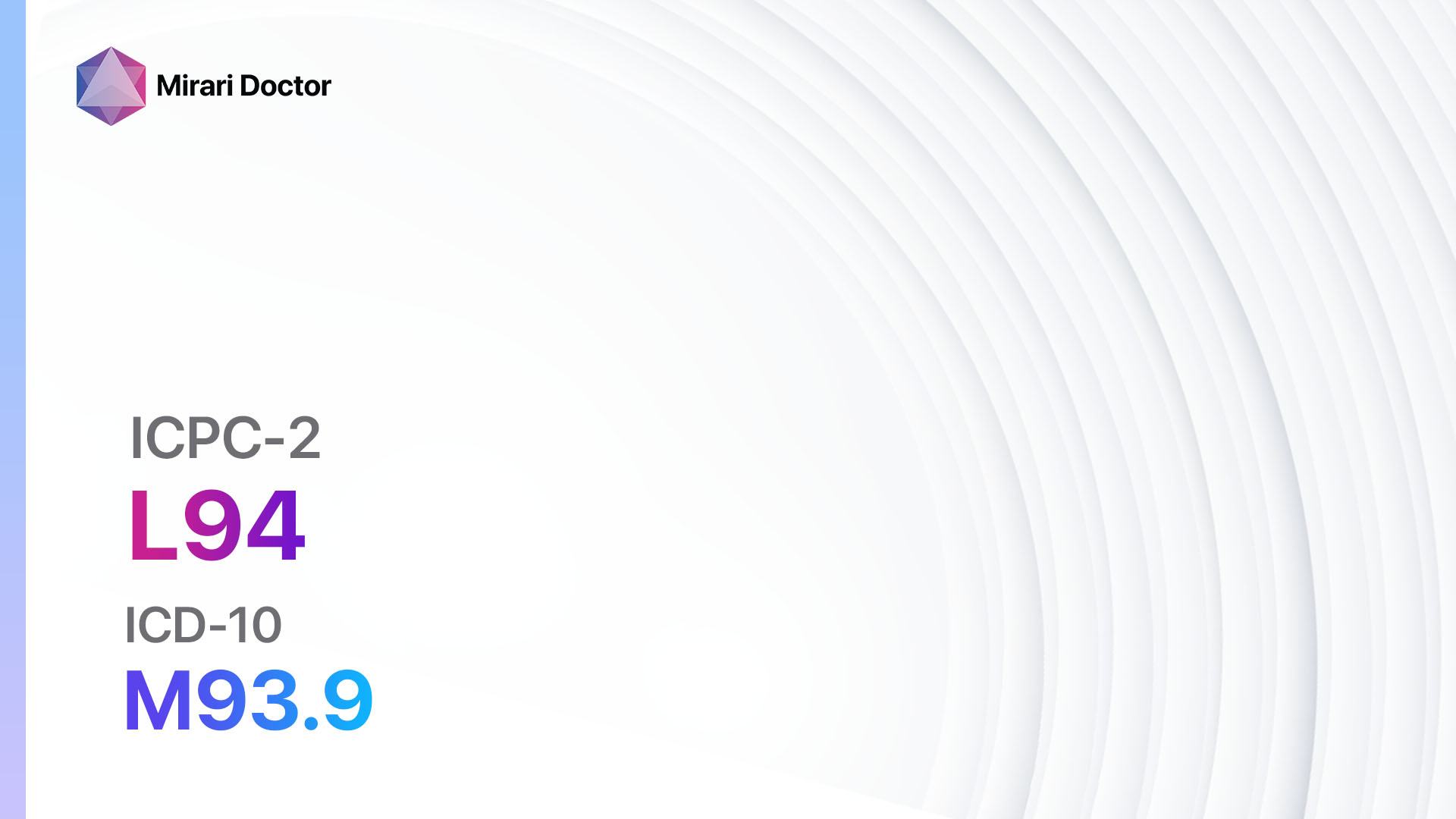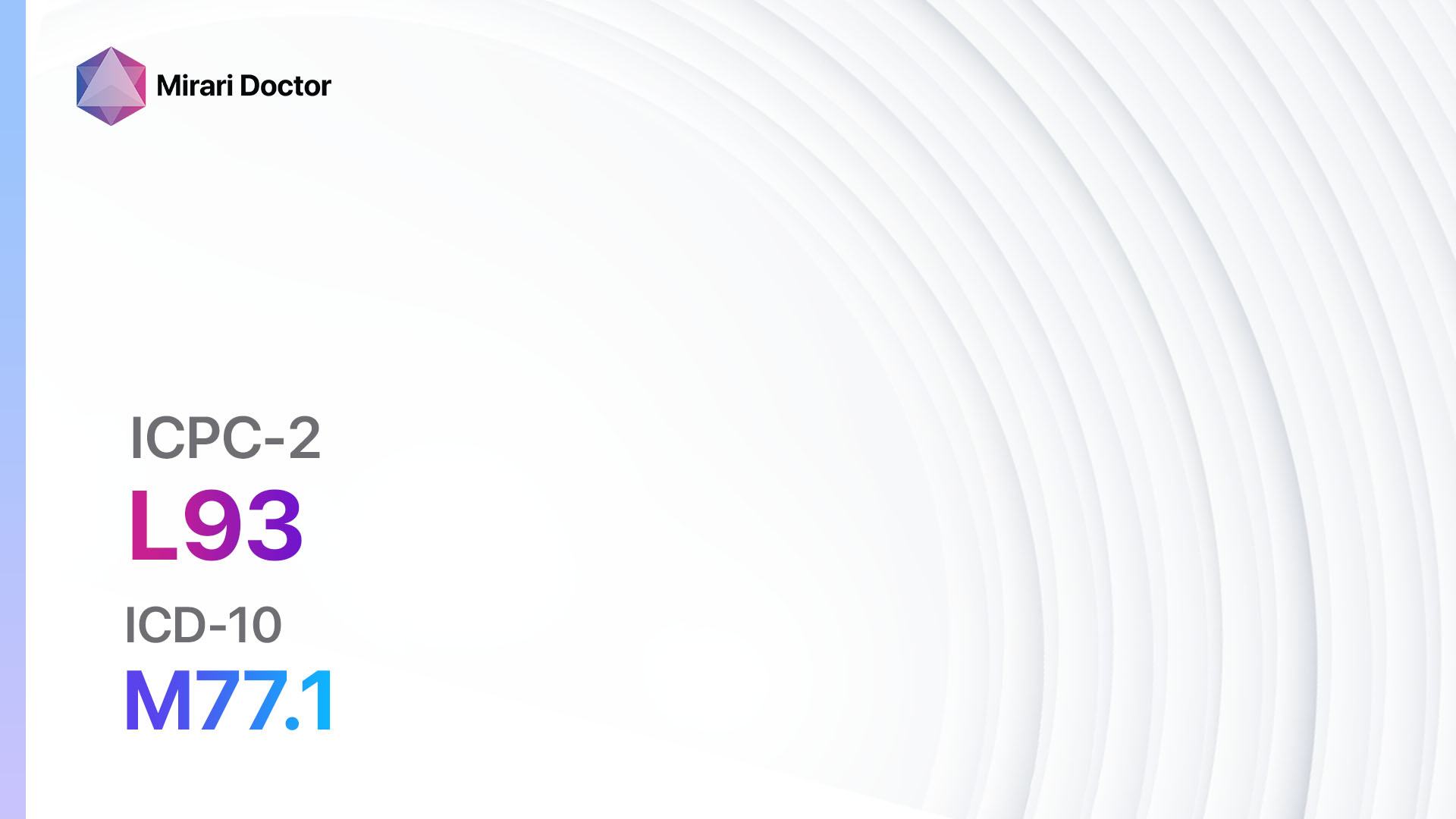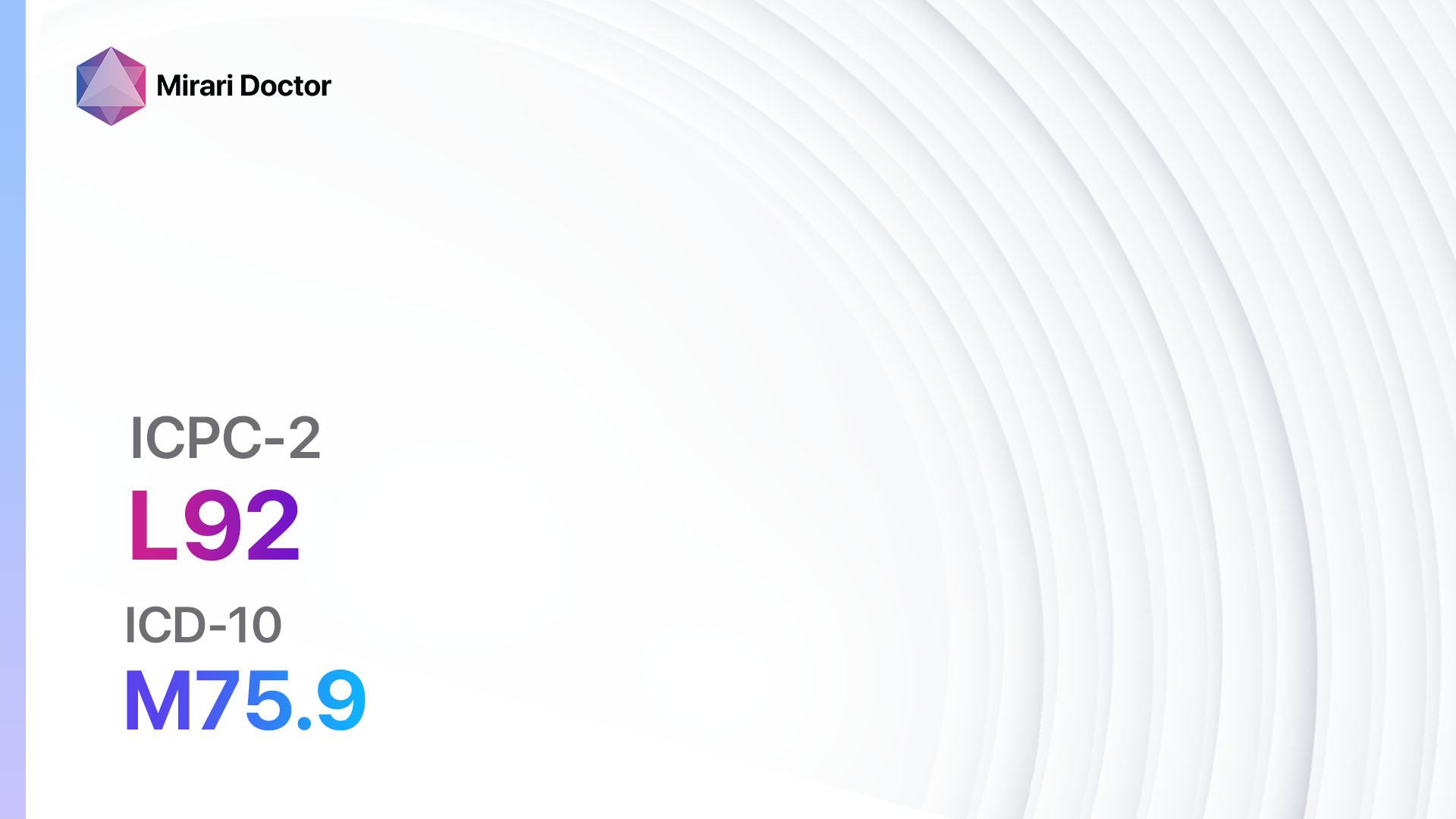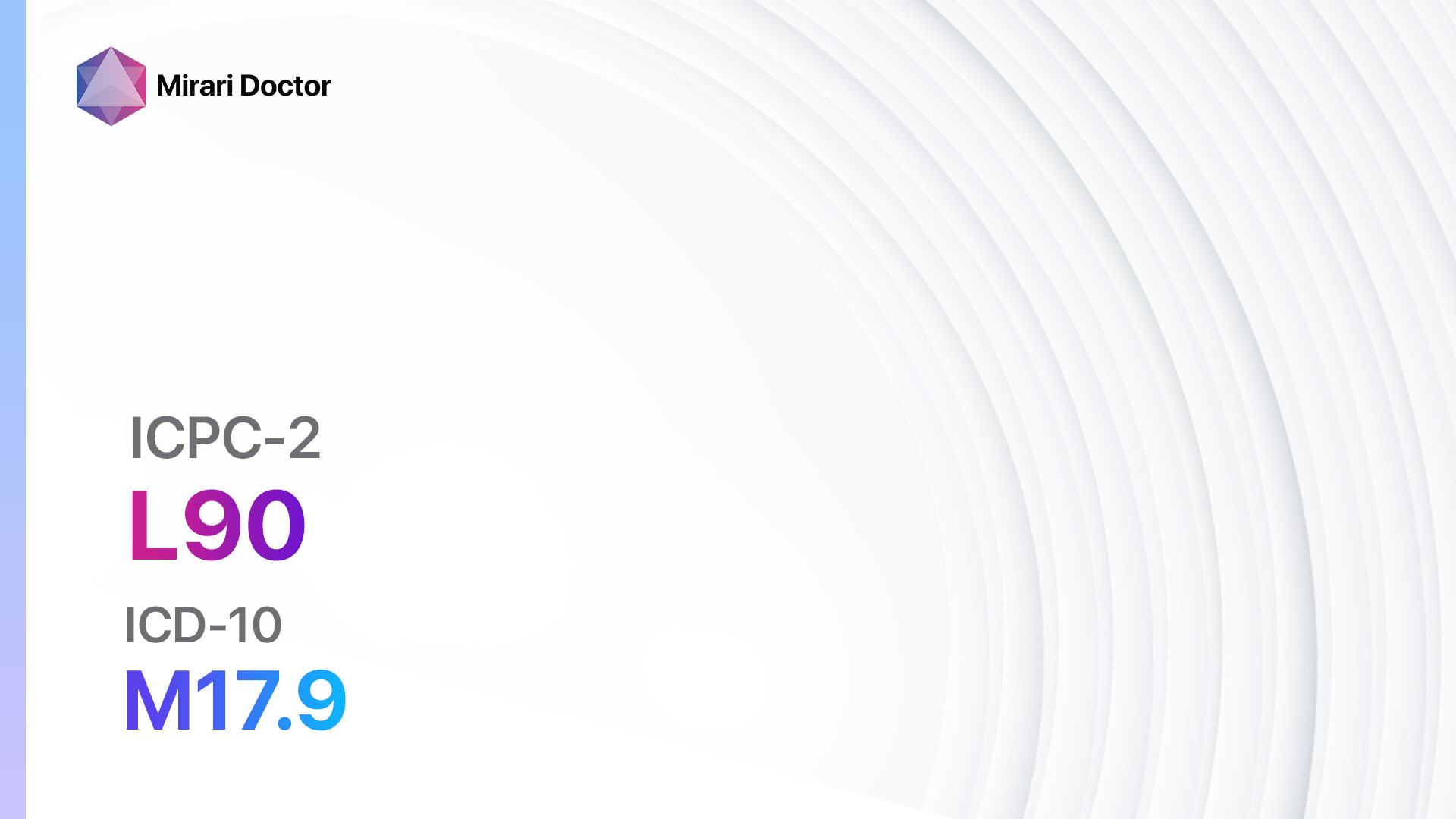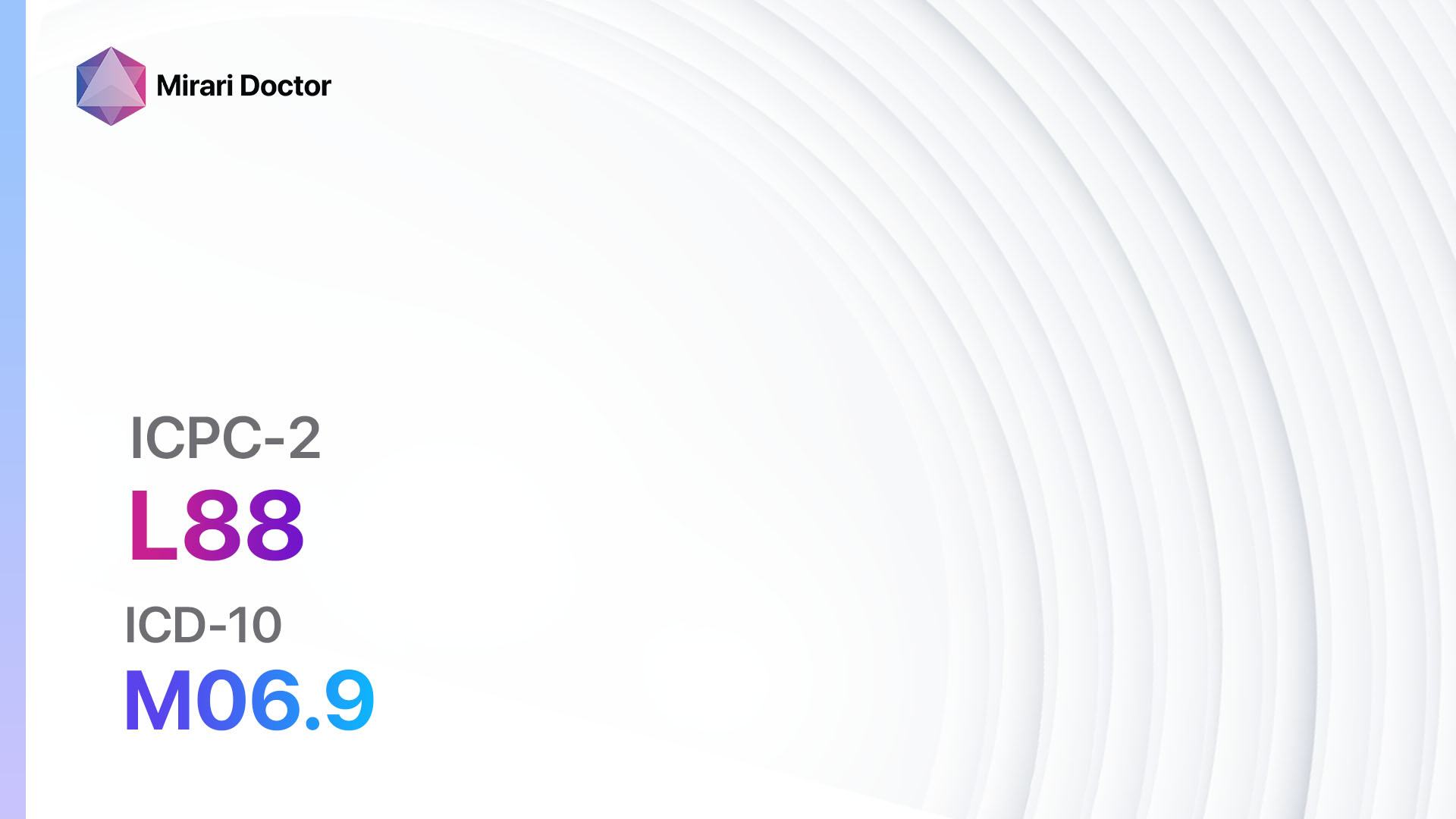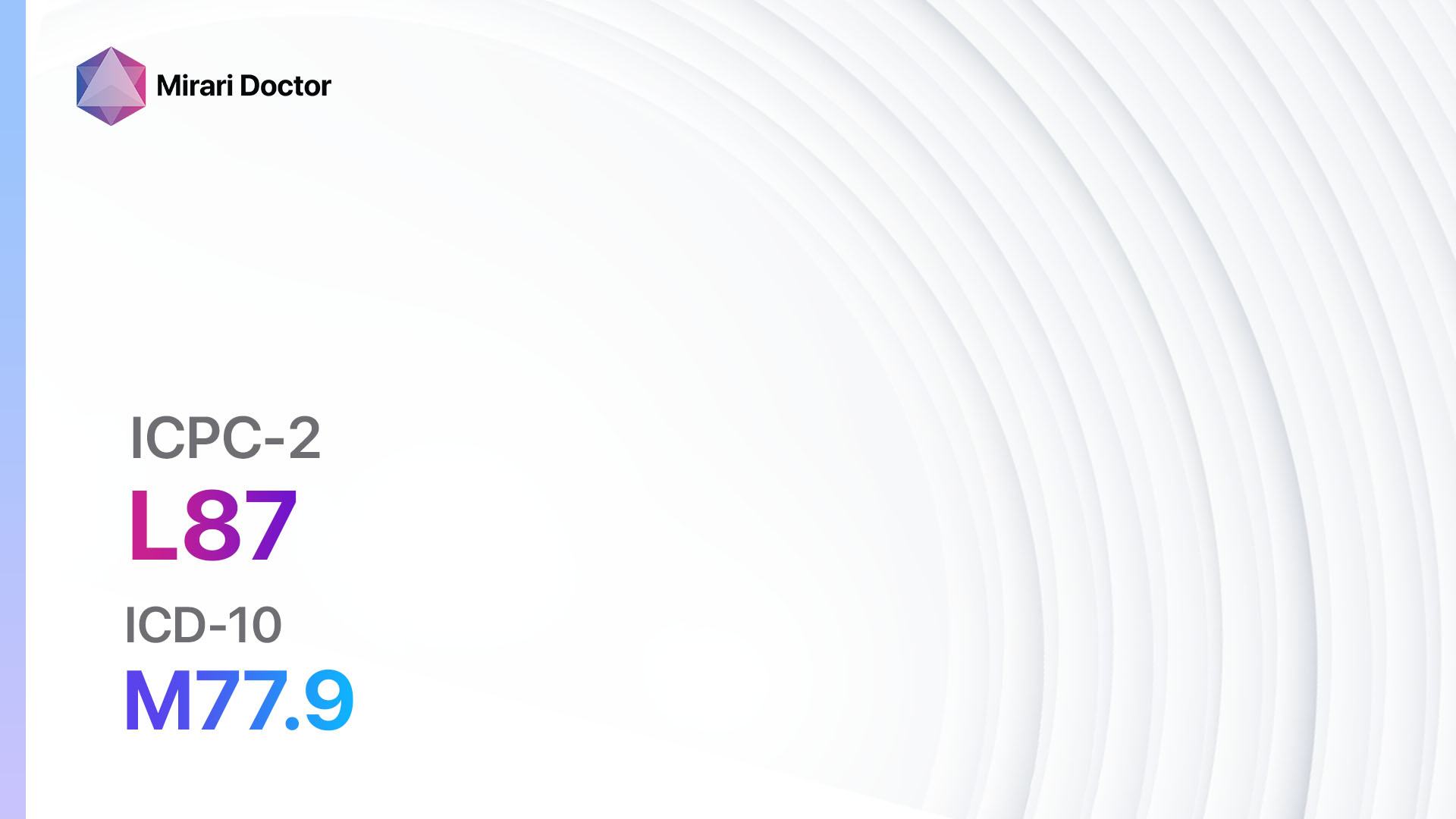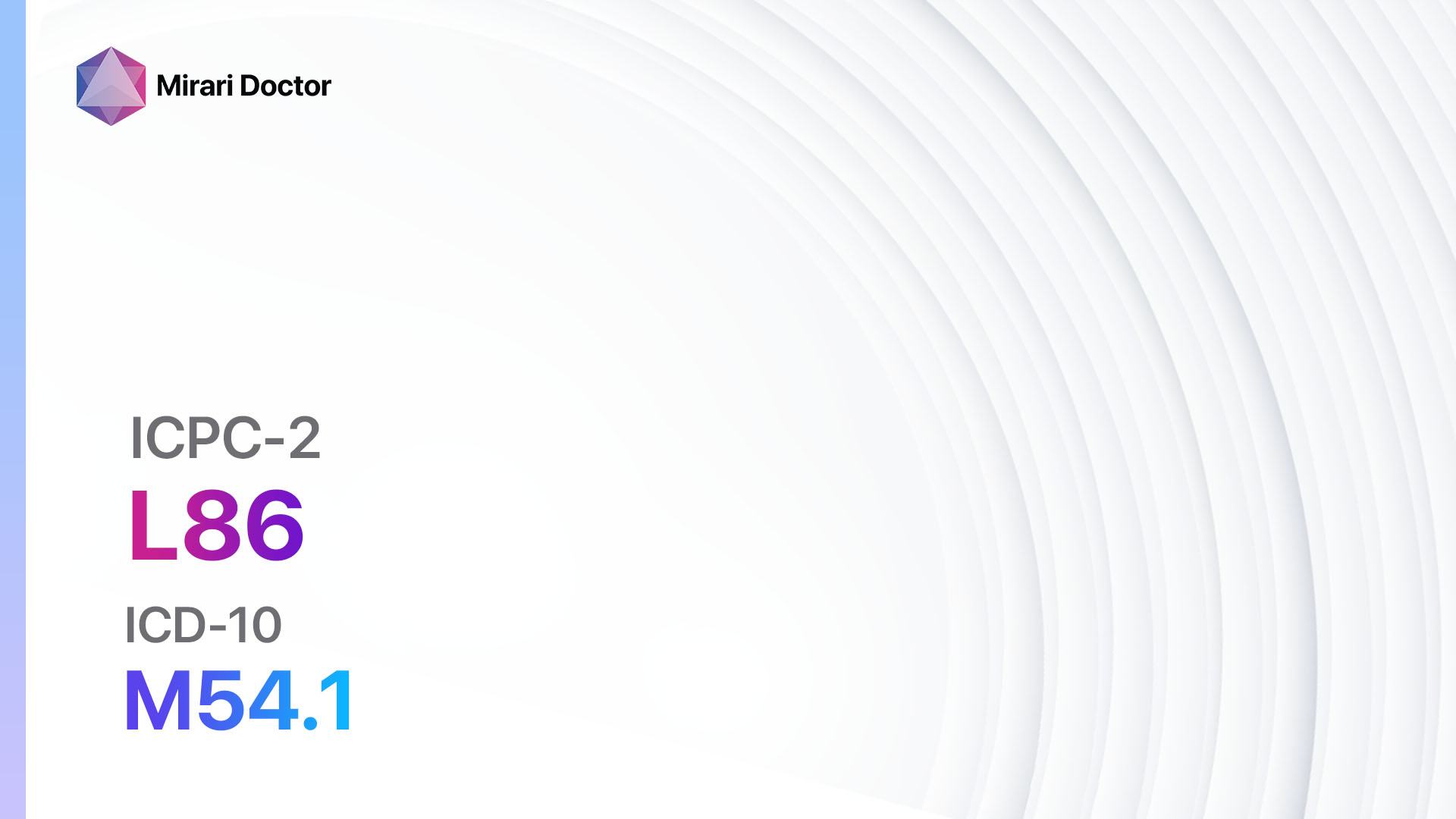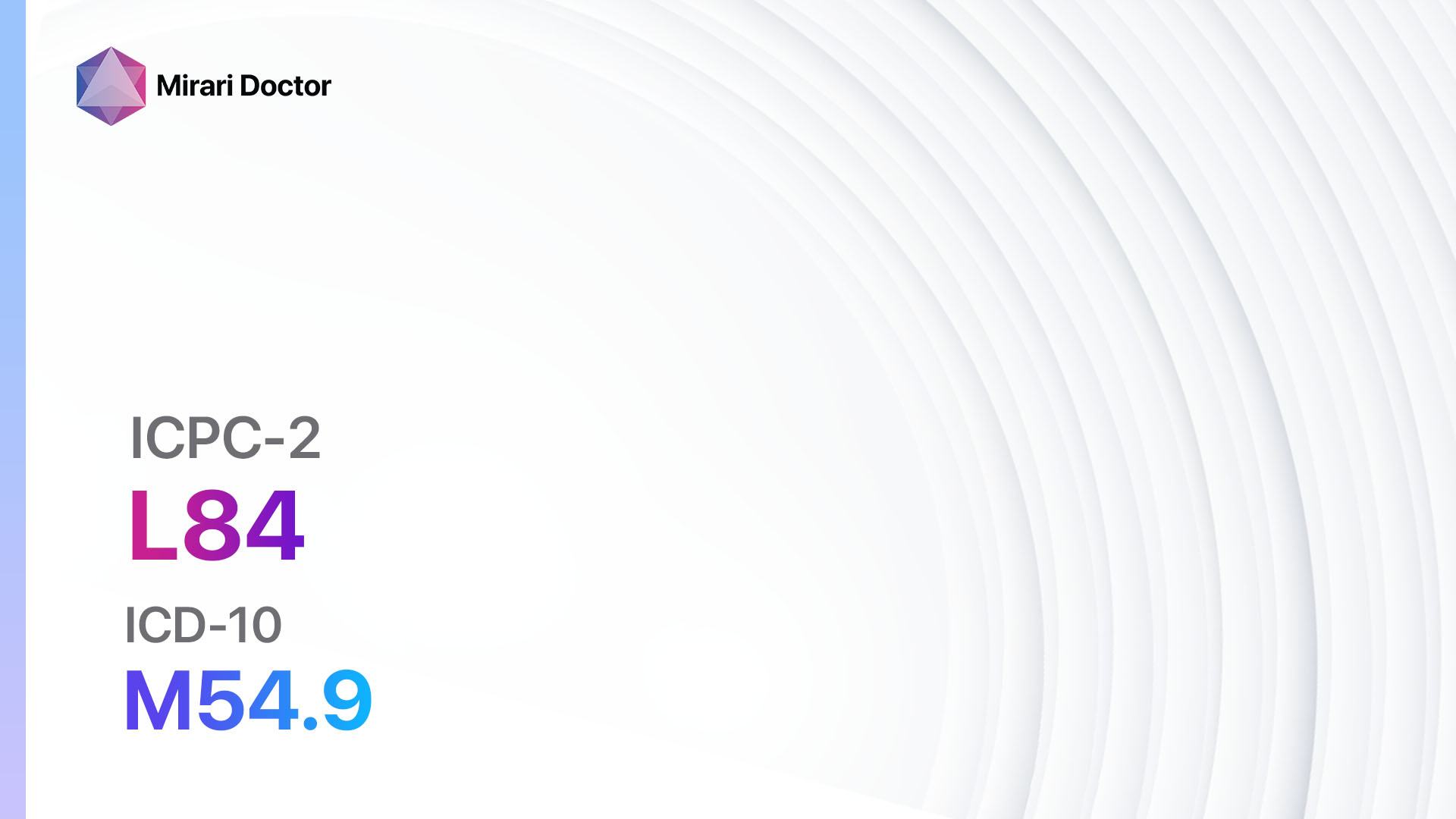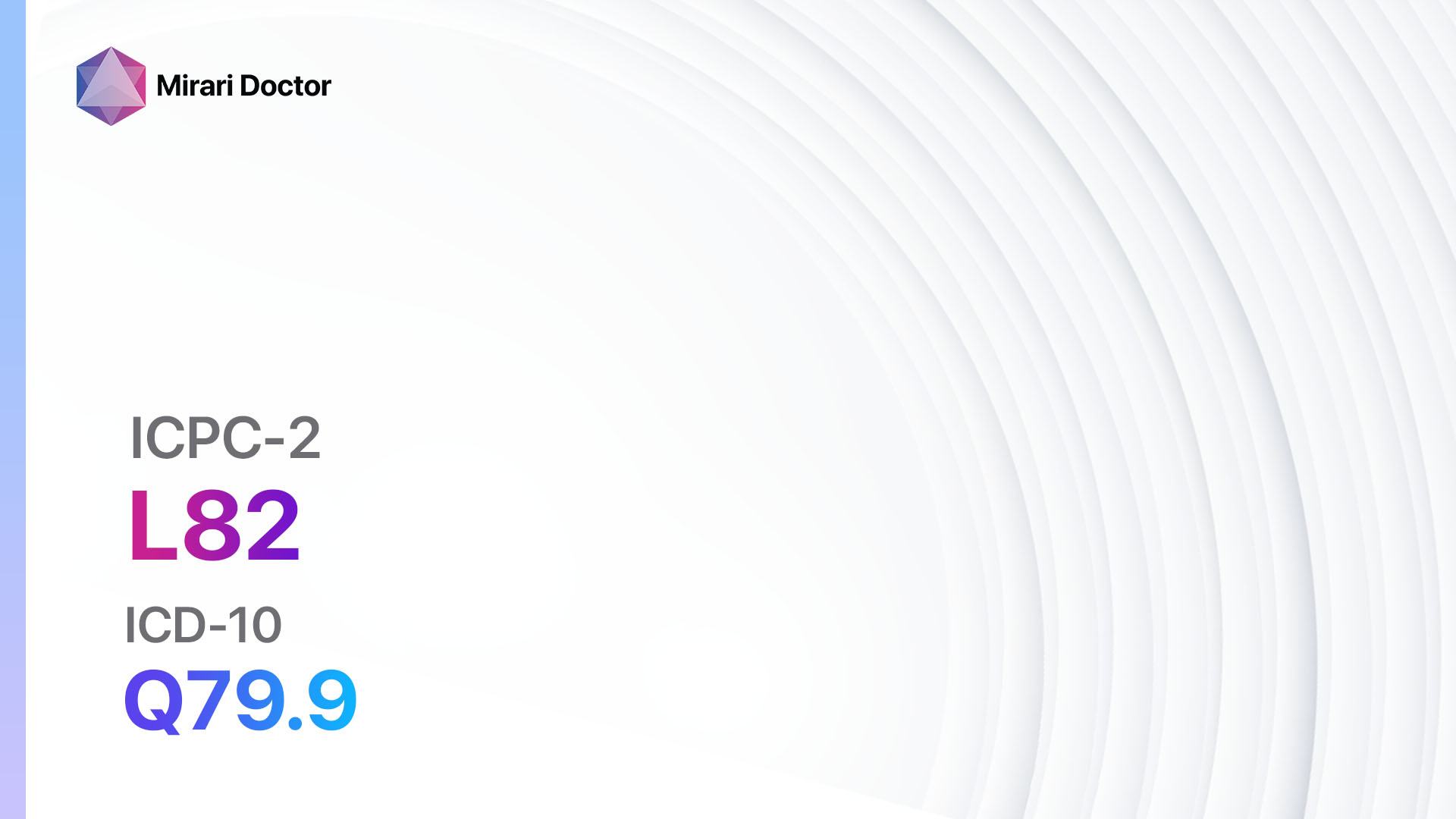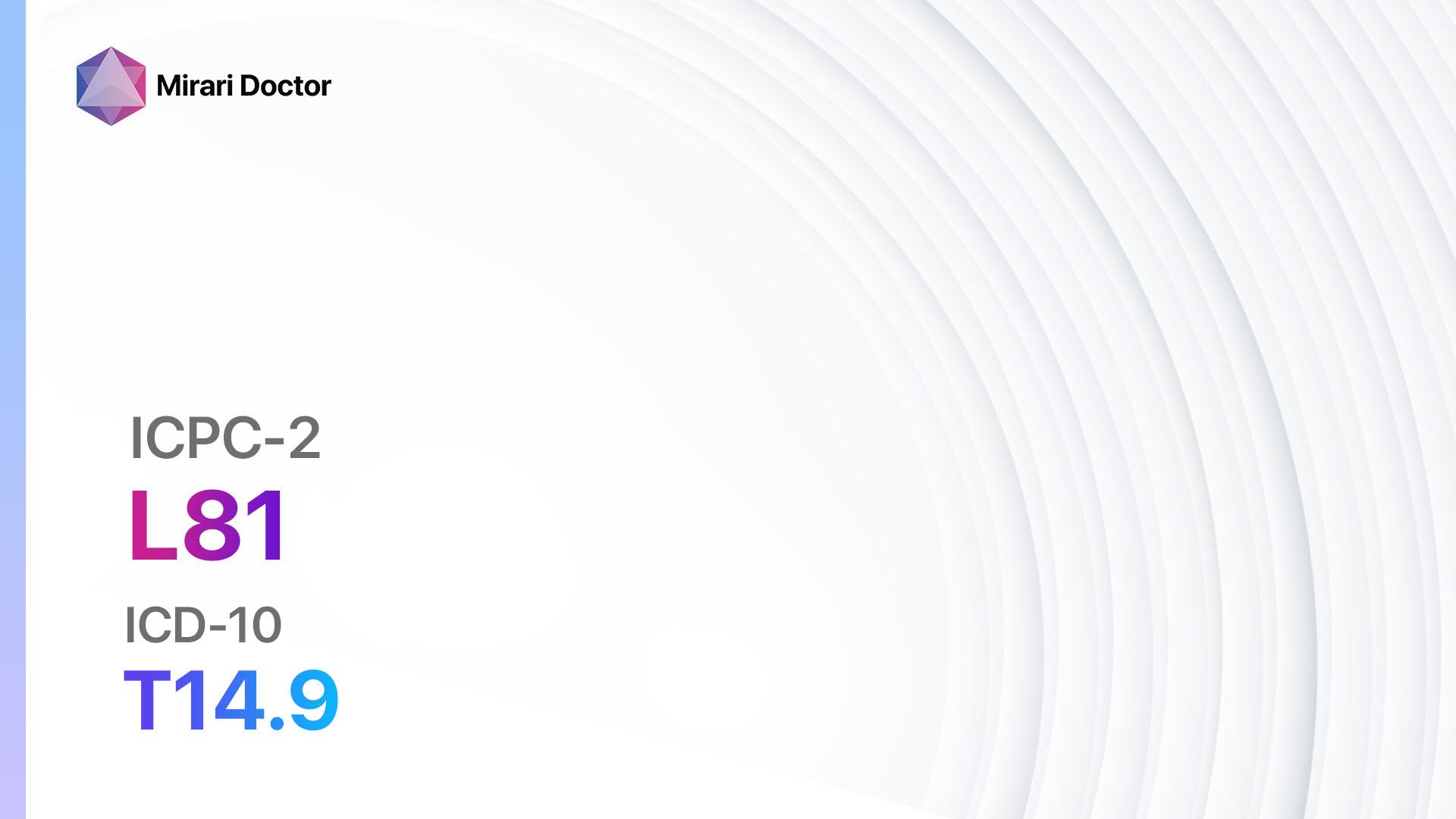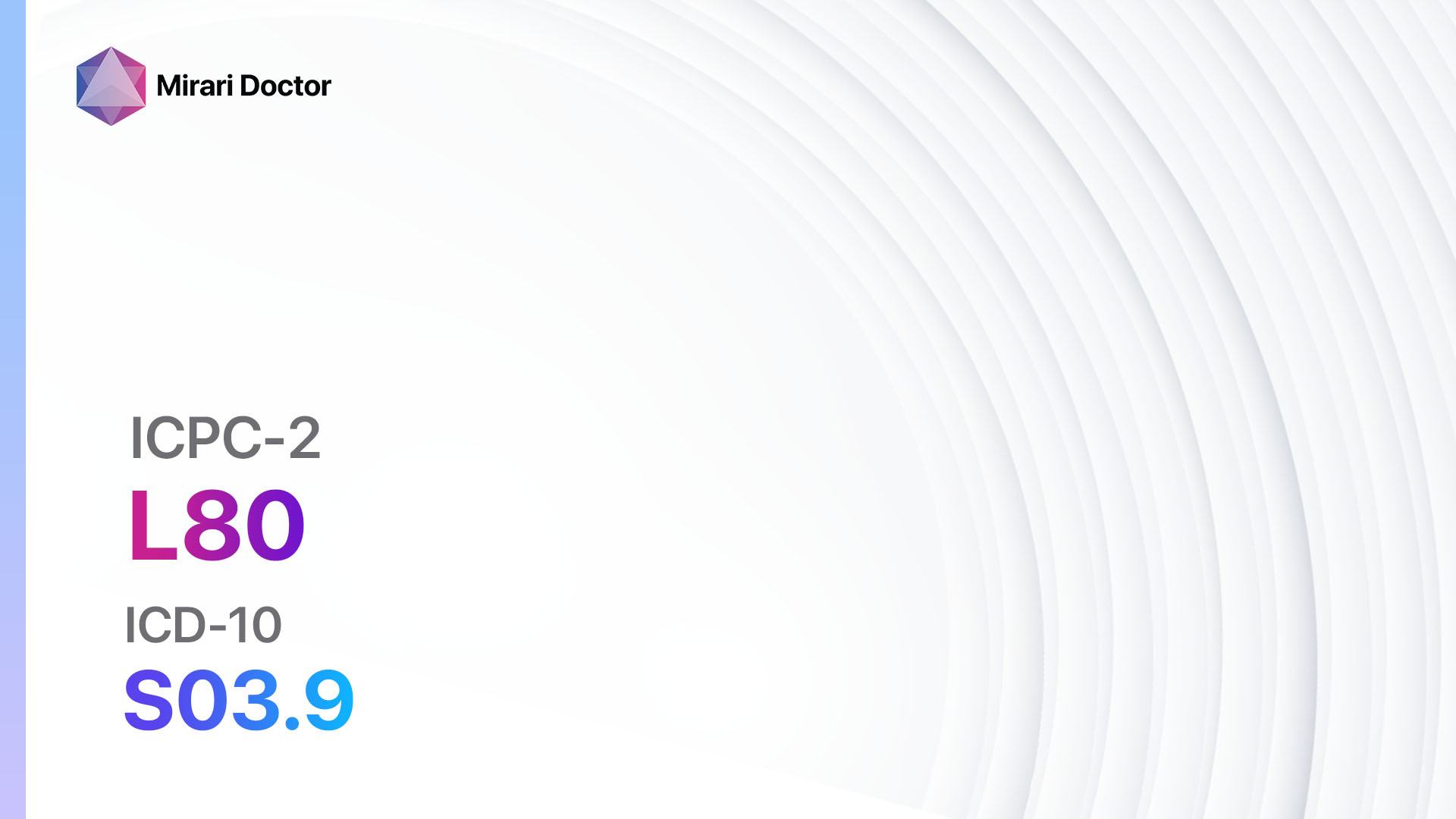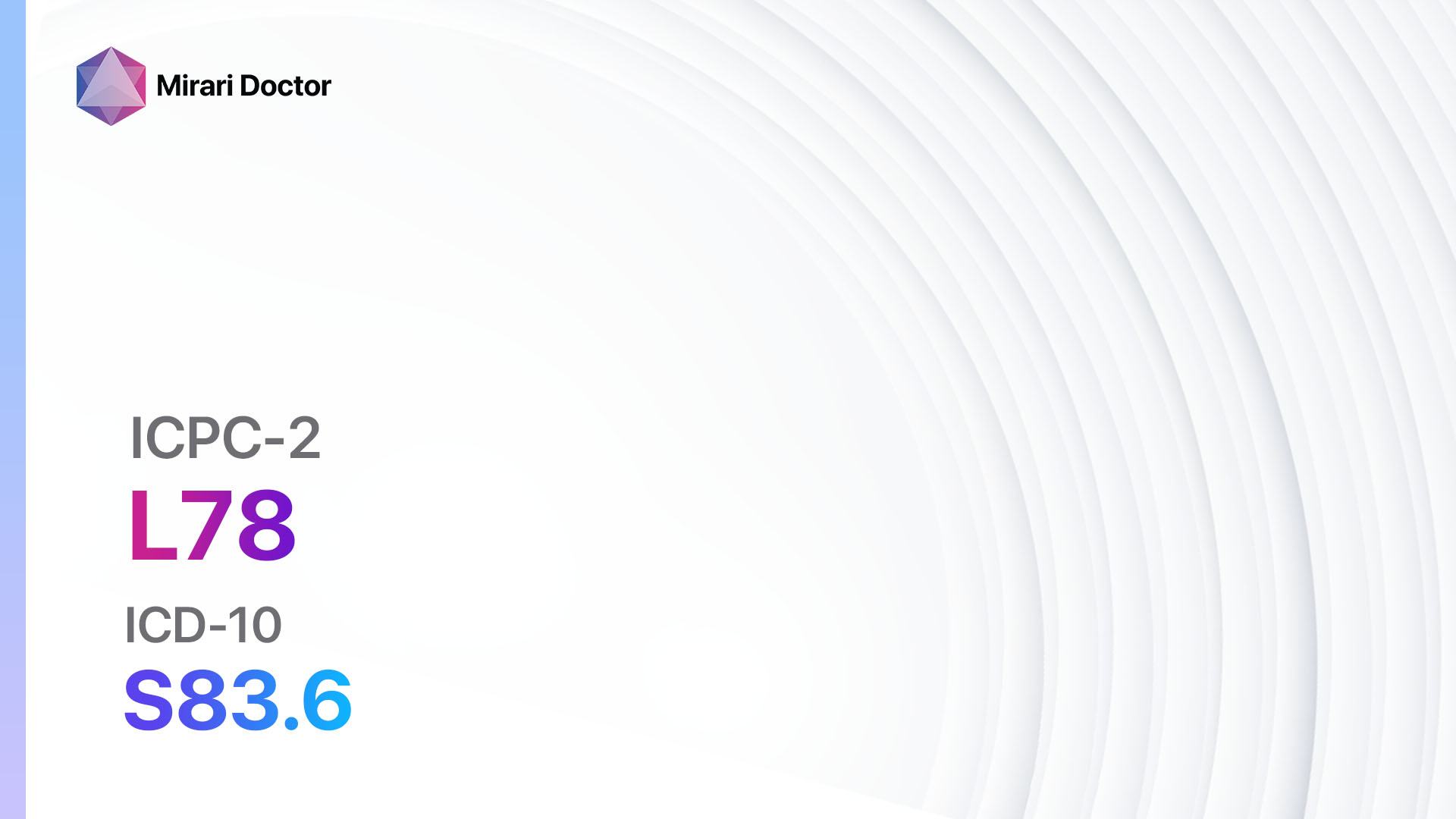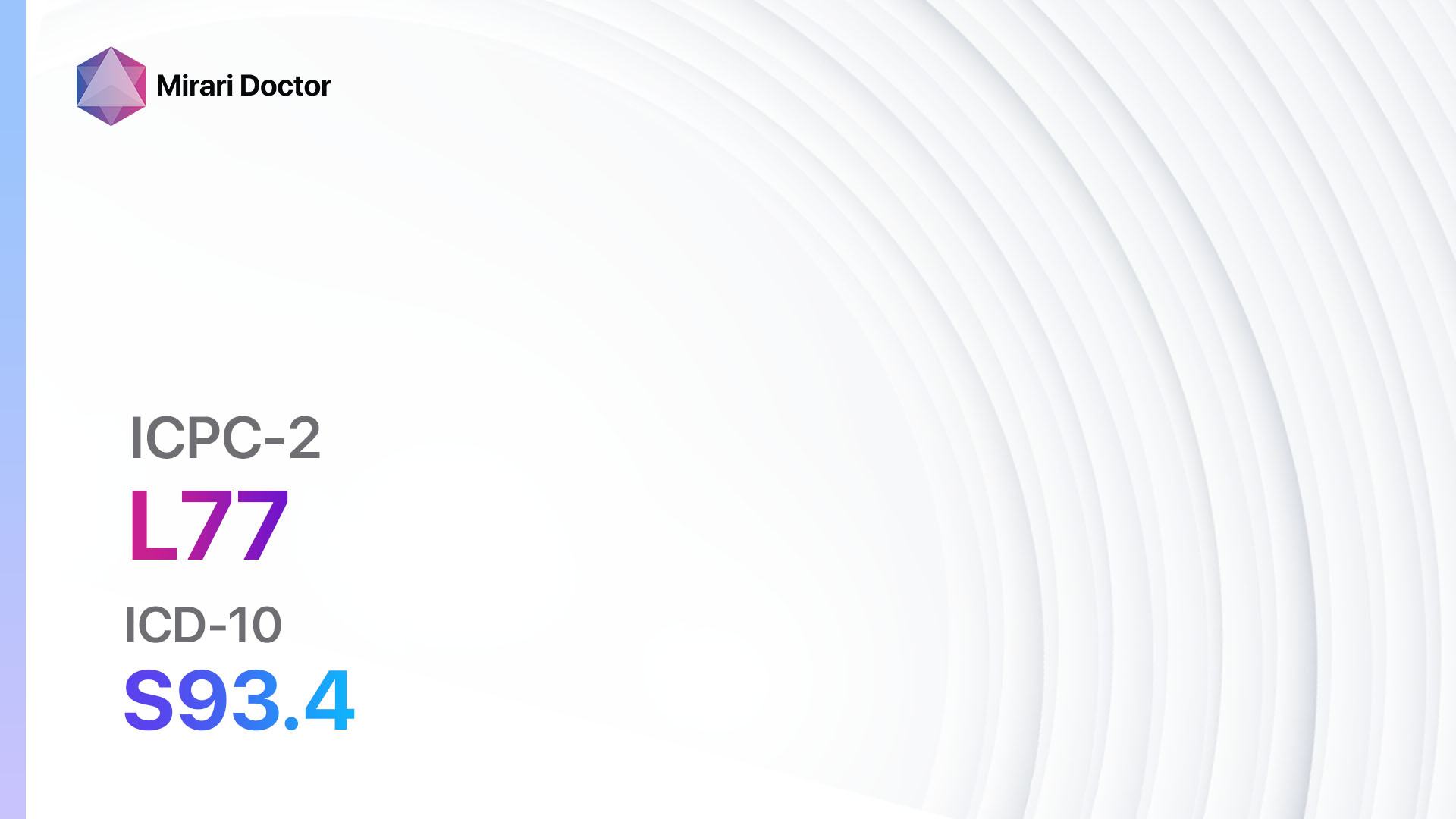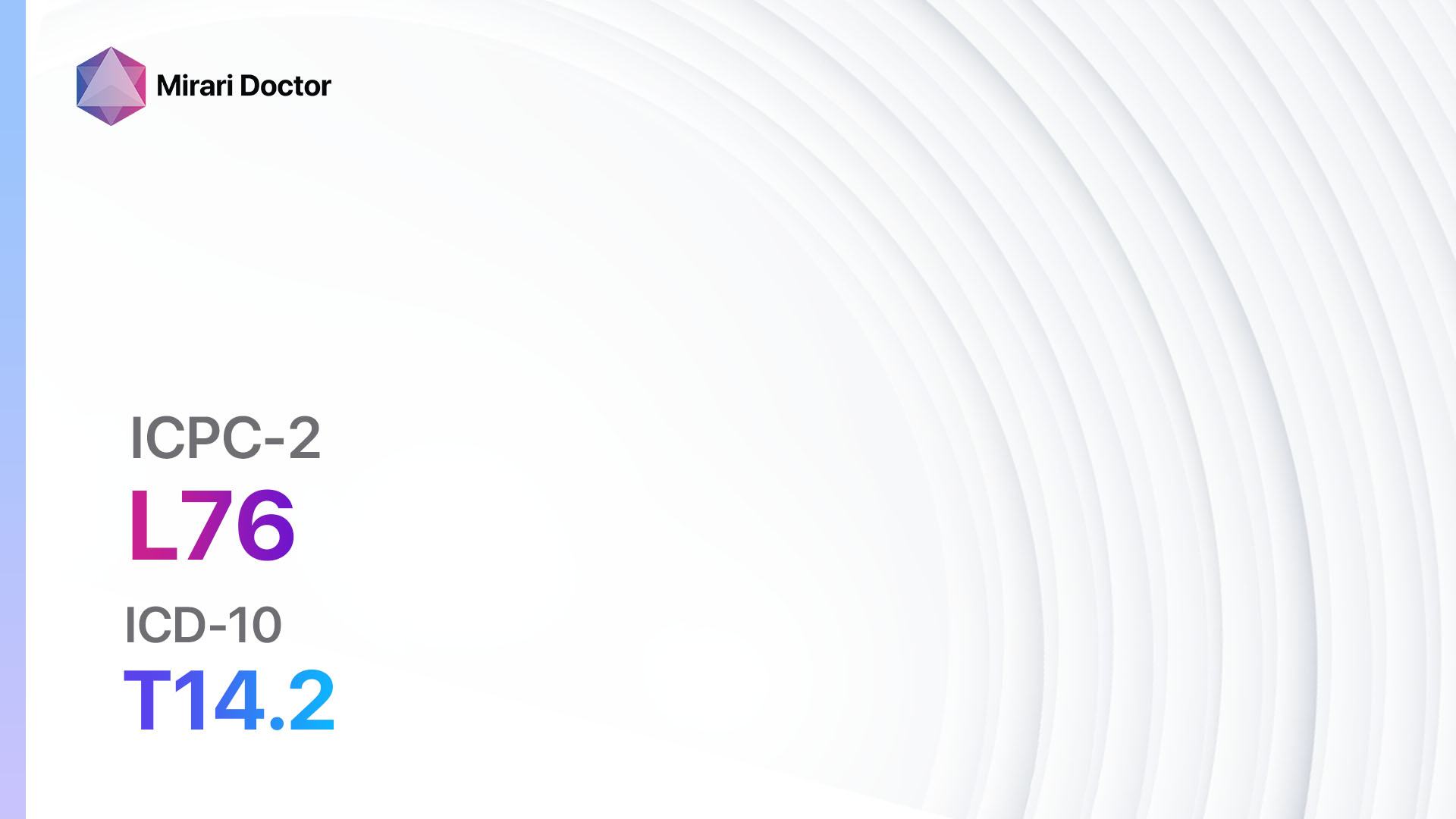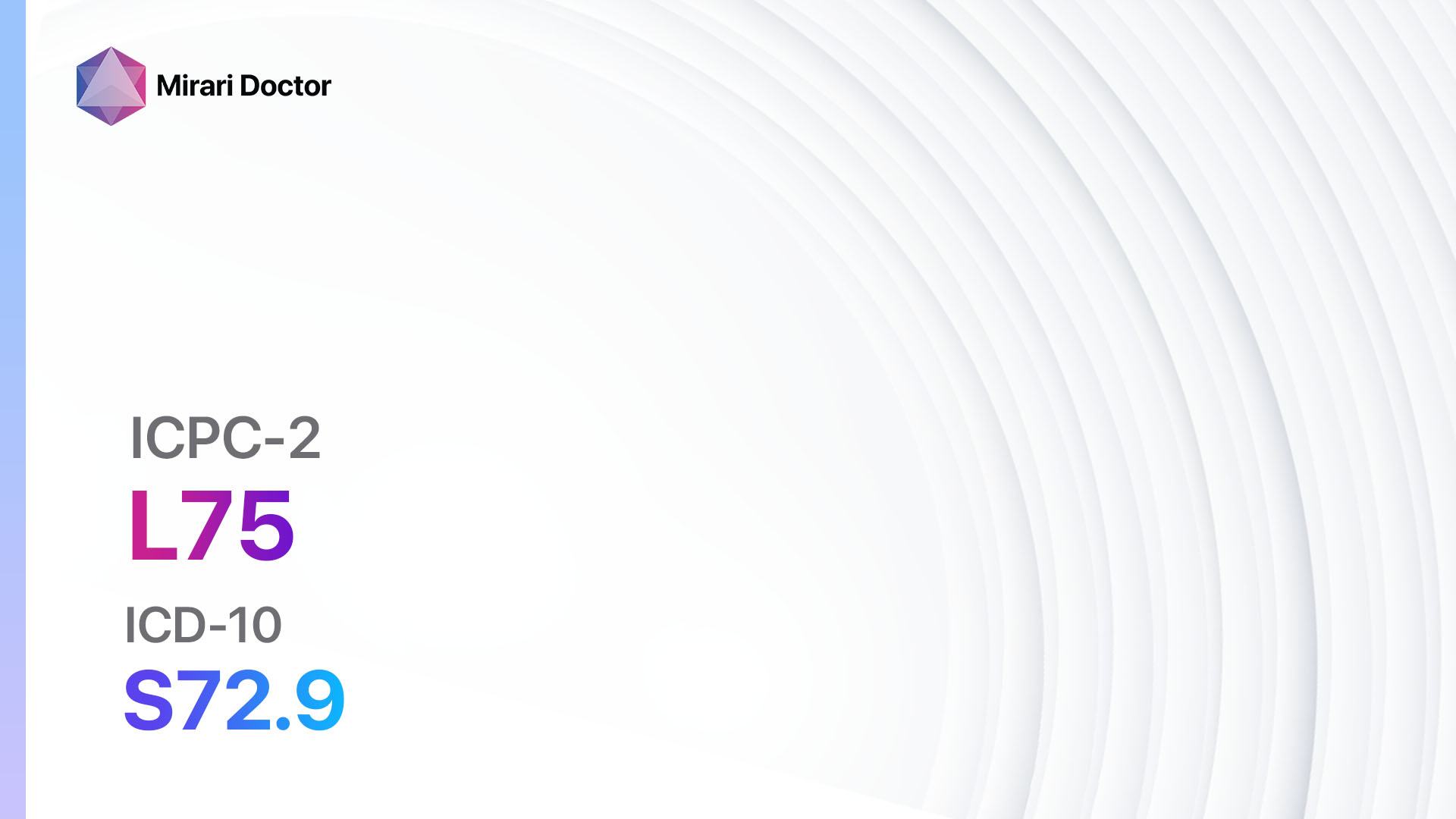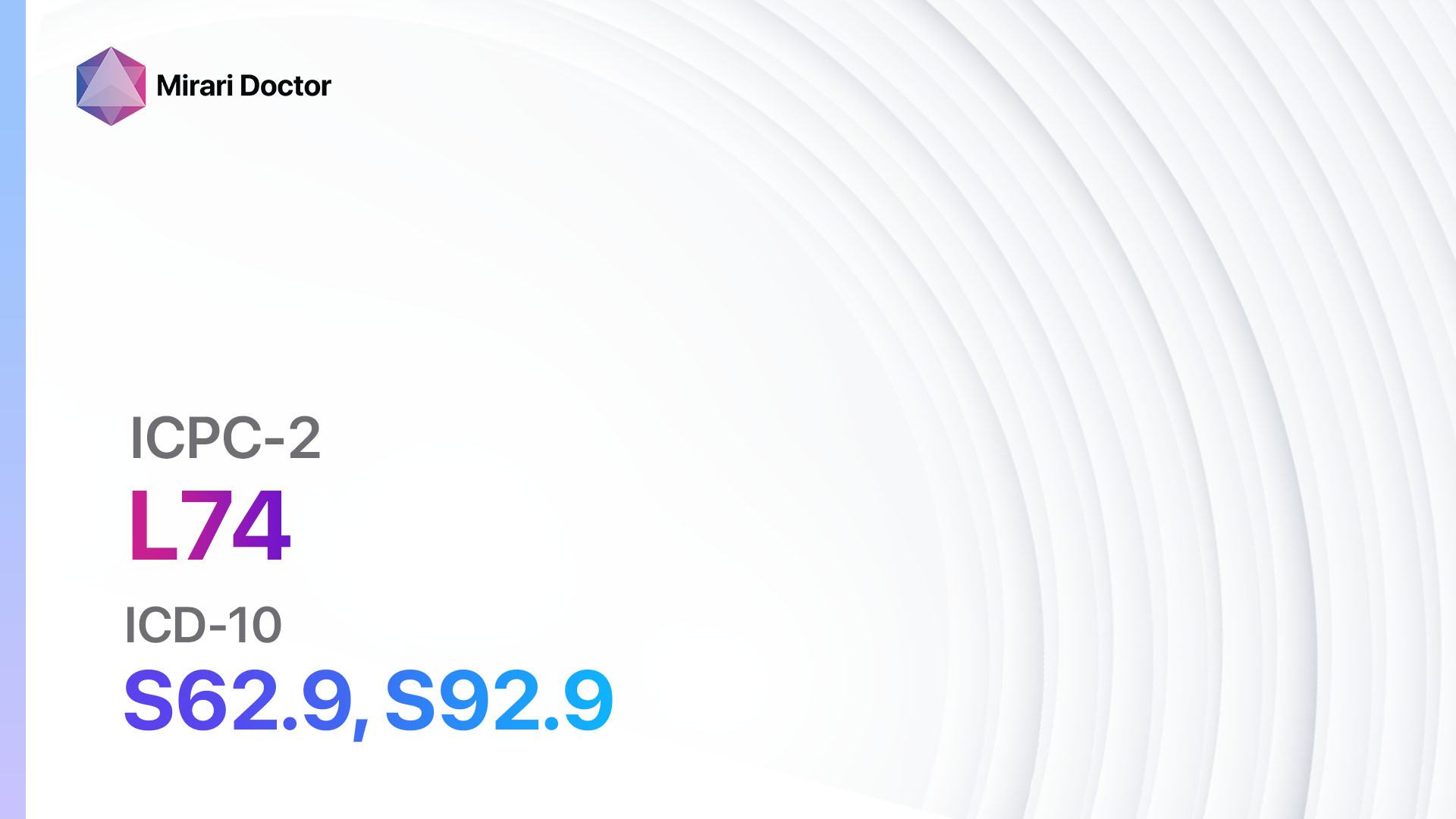
Introduction
Joint symptom/complaint NOS refers to a non-specific complaint related to joint pain or discomfort that does not fit into a specific diagnostic category. It is a common reason for patients seeking medical attention and can be caused by various factors[1]. The aim of this guide is to provide healthcare professionals with a comprehensive approach to diagnosing and managing joint symptoms/complaints NOS.
Codes
Symptoms
- Joint pain: Patients may experience pain in one or multiple joints[4].
- Joint stiffness: Patients may have difficulty moving the affected joint(s) due to stiffness[4].
- Joint swelling: Swelling may be present in the affected joint(s)[4].
- Joint redness: The affected joint(s) may appear red or inflamed[4].
- Joint warmth: The affected joint(s) may feel warm to the touch[4].
Causes
- Osteoarthritis: The most common cause of joint symptoms/complaints NOS, characterized by the breakdown of cartilage in the joints[5].
- Rheumatoid arthritis: An autoimmune disease that causes chronic inflammation of the joints[6].
- Gout: A form of arthritis caused by the buildup of uric acid crystals in the joints[7].
- Injury or trauma: Joint symptoms/complaints NOS can be caused by previous injuries or trauma to the joint(s)[8].
- Infection: Joint symptoms/complaints NOS can be a result of an underlying infection in the joint(s)[9].
- Other systemic diseases: Conditions such as lupus, fibromyalgia, or Lyme disease can cause joint symptoms/complaints NOS[10].
Diagnostic Steps
Medical History
- Obtain a detailed medical history, including information about the onset, duration, and progression of joint symptoms.
- Ask about any previous injuries or trauma to the joint(s).
- Inquire about any other medical conditions or systemic diseases that may be contributing to the joint symptoms.
- Assess for any risk factors, such as family history of arthritis or occupation-related joint stress.
Physical Examination
- Perform a thorough physical examination, including inspection, palpation, and range of motion testing of the affected joint(s).
- Look for signs of inflammation, such as redness, swelling, or warmth.
- Assess for any deformities or abnormalities in the joint(s).
- Evaluate the patient’s gait and overall mobility.
Laboratory Tests
- Complete blood count (CBC): To assess for signs of infection or inflammation.
- Erythrocyte sedimentation rate (ESR) and C-reactive protein (CRP): To measure the level of inflammation in the body.
- Rheumatoid factor (RF) and anti-cyclic citrullinated peptide (anti-CCP) antibodies: To help diagnose rheumatoid arthritis.
- Uric acid level: To evaluate for gout.
- Joint fluid analysis: If joint swelling is present, a sample of the fluid may be taken for analysis to determine the cause of the symptoms.
Diagnostic Imaging
- X-rays: To assess for any structural abnormalities or signs of joint damage.
- Magnetic resonance imaging (MRI): To provide a more detailed view of the joint(s) and surrounding structures.
- Ultrasound: To evaluate the soft tissues and fluid in and around the joint(s).
- Computed tomography (CT) scan: To provide a cross-sectional view of the joint(s) and surrounding structures.
Other Tests
- Bone scan: To detect any areas of increased bone activity, which may indicate infection or inflammation.
- Arthroscopy: A minimally invasive procedure in which a small camera is inserted into the joint to visualize and diagnose any abnormalities.
- Genetic testing: In certain cases, genetic testing may be recommended to identify specific gene mutations associated with joint symptoms/complaints NOS.
Follow-up and Patient Education
- Schedule follow-up appointments to monitor the progression of symptoms and assess the effectiveness of interventions.
- Provide patient education on joint protection techniques, lifestyle modifications, and self-management strategies.
- Encourage patients to maintain a healthy weight, engage in regular exercise, and follow a balanced diet to support joint health.
Possible Interventions
Traditional Interventions
Medications:
Top 5 drugs for Joint symptom/complaint NOS:
- Nonsteroidal anti-inflammatory drugs (NSAIDs) (e.g., Ibuprofen, Naproxen):
- Cost: Generic versions can be $3-$20/month.
- Contraindications: Active peptic ulcer disease, history of gastrointestinal bleeding, severe renal impairment.
- Side effects: Upset stomach, heartburn, increased risk of bleeding.
- Severe side effects: Gastrointestinal bleeding, kidney damage, cardiovascular events.
- Drug interactions: Anticoagulants, corticosteroids, selective serotonin reuptake inhibitors (SSRIs).
- Warning: Prolonged use may increase the risk of cardiovascular events.
- Acetaminophen:
- Cost: Generic versions can be $3-$10/month.
- Contraindications: Severe liver disease, alcoholism.
- Side effects: Rare at therapeutic doses, but high doses can cause liver damage.
- Severe side effects: Acute liver failure.
- Drug interactions: Warfarin, alcohol.
- Warning: Maximum daily dose should not exceed 4 grams.
- Corticosteroids (e.g., Prednisone):
- Cost: Generic versions can be $4-$20/month.
- Contraindications: Active infections, uncontrolled diabetes, systemic fungal infections.
- Side effects: Increased appetite, weight gain, mood changes.
- Severe side effects: Osteoporosis, adrenal suppression, increased risk of infections.
- Drug interactions: Nonsteroidal anti-inflammatory drugs (NSAIDs), anticoagulants.
- Warning: Long-term use should be avoided due to potential side effects.
- Disease-modifying antirheumatic drugs (DMARDs) (e.g., Methotrexate, Sulfasalazine):
- Cost: Generic versions can be $10-$50/month.
- Contraindications: Pregnancy, severe liver disease, severe renal impairment.
- Side effects: Nausea, vomiting, increased risk of infections.
- Severe side effects: Bone marrow suppression, liver toxicity.
- Drug interactions: NSAIDs, corticosteroids.
- Warning: Regular monitoring of blood counts and liver function is required.
- Biologic agents (e.g., Adalimumab, Etanercept):
- Cost: Brand-name versions can range from $1,000 to $5,000/month.
- Contraindications: Active infections, history of malignancy.
- Side effects: Injection site reactions, increased risk of infections.
- Severe side effects: Serious infections, malignancies.
- Drug interactions: Live vaccines, immunosuppressive agents.
- Warning: Patients should be screened for tuberculosis before starting treatment.
Alternative Drugs:
- Capsaicin cream: Topical cream that can help relieve joint pain. Cost: $10-$20 per tube.
- Glucosamine and chondroitin: Dietary supplements that may provide symptomatic relief for joint pain. Cost: $20-$40 per month.
- Topical NSAIDs: Creams or gels containing NSAIDs that can be applied directly to the affected joint(s). Cost: $10-$30 per tube.
- Muscle relaxants: Medications that can help relieve muscle spasms associated with joint symptoms. Cost: $10-$50 per month.
- Opioids: Reserved for severe cases of joint pain that do not respond to other interventions. Cost: Varies depending on the specific medication and dosage.
Surgical Procedures:
- Arthroscopy: A minimally invasive procedure in which a small camera is inserted into the joint to visualize and treat any abnormalities. Cost: $5,000 to $10,000.
- Joint replacement surgery: In severe cases of joint damage, a joint replacement surgery may be necessary to relieve pain and improve function. Cost: $20,000 to $50,000.
Alternative Interventions
- Acupuncture: May help reduce joint pain and improve mobility. Cost: $60-$120 per session.
- Chiropractic care: Manual manipulation of the spine and joints to relieve pain and improve joint function. Cost: $50-$200 per session.
- Physical therapy: Targeted exercises and therapies to improve joint strength and flexibility. Cost: $50-$150 per session.
- Massage therapy: Manipulation of soft tissues to reduce muscle tension and improve circulation. Cost: $50-$100 per session.
- Herbal supplements: Some herbal supplements, such as turmeric or ginger, may have anti-inflammatory properties. Cost: Varies depending on the specific supplement.
Lifestyle Interventions
- Weight management: Maintaining a healthy weight can reduce stress on the joints. Cost: Varies depending on the chosen weight loss method.
- Regular exercise: Low-impact exercises, such as swimming or cycling, can help improve joint mobility and reduce pain. Cost: Varies depending on the chosen exercise program.
- Heat and cold therapy: Applying heat or cold packs to the affected joint(s) can help relieve pain and reduce inflammation. Cost: $10-$30 for heat or cold packs.
- Assistive devices: Using assistive devices, such as canes or braces, can help support the joints and improve mobility. Cost: Varies depending on the specific device.
- Dietary modifications: Consuming a balanced diet rich in fruits, vegetables, and omega-3 fatty acids can support joint health. Cost: Varies depending on individual food choices.
It is important to note that the cost ranges provided are approximate and may vary depending on the location and availability of the interventions.
Mirari Cold Plasma Alternative Intervention
Understanding Mirari Cold Plasma
- Safe and Non-Invasive Treatment: Mirari Cold Plasma is a safe and non-invasive treatment option for various skin conditions. It does not require incisions, minimizing the risk of scarring, bleeding, or tissue damage.
- Efficient Extraction of Foreign Bodies: Mirari Cold Plasma facilitates the removal of foreign bodies from the skin by degrading and dissociating organic matter, allowing easier access and extraction.
- Pain Reduction and Comfort: Mirari Cold Plasma has a local analgesic effect, providing pain relief during the treatment, making it more comfortable for the patient.
- Reduced Risk of Infection: Mirari Cold Plasma has antimicrobial properties, effectively killing bacteria and reducing the risk of infection.
- Accelerated Healing and Minimal Scarring: Mirari Cold Plasma stimulates wound healing and tissue regeneration, reducing healing time and minimizing the formation of scars.
Mirari Cold Plasma Prescription
Video instructions for using Mirari Cold Plasma Device – L20 Joint symptom/complaint NOS (ICD-10:M25.9)
| Mild | Moderate | Severe |
| Mode setting: 2 (Wound Healing) Location: 0 (Localized) Morning: 15 minutes, Evening: 15 minutes |
Mode setting: 2 (Wound Healing) Location: 0 (Localized) Morning: 30 minutes, Lunch: 30 minutes, Evening: 30 minutes |
Mode setting: 2 (Wound Healing) Location: 0 (Localized) Morning: 30 minutes, Lunch: 30 minutes, Evening: 30 minutes |
| Mode setting: 9 (Arthritis) Location: 0 (Localized) Morning: 15 minutes, Evening: 15 minutes |
Mode setting: 9 (Arthritis) Location: 0 (Localized) Morning: 30 minutes, Lunch: 30 minutes, Evening: 30 minutes |
Mode setting: 9 (Arthritis) Location: 0 (Localized) Morning: 30 minutes, Lunch: 30 minutes, Evening: 30 minutes |
| Mode setting: 7 (Immunotherapy) Location: 1 (Sacrum) Morning: 15 minutes, Evening: 15 minutes |
Mode setting: 7 (Immunotherapy) Location: 1 (Sacrum) Morning: 30 minutes, Lunch: 30 minutes, Evening: 30 minutes |
Mode setting: 7 (Immunotherapy) Location: 1 (Sacrum) Morning: 30 minutes, Lunch: 30 minutes, Evening: 30 minutes |
| Total Morning: 45 minutes approx. $7.50 USD, Evening: 45 minutes approx. $7.50 USD |
Total Morning: 90 minutes approx. $15 USD, Lunch: 90 minutes approx. $15 USD, Evening: 90 minutes approx. $15 USD, |
Total Morning: 90 minutes approx. $15 USD, Lunch: 90 minutes approx. $15 USD, Evening: 90 minutes approx. $15 USD, |
| Usual treatment for 7-60 days approx. $105 USD – $900 USD | Usual treatment for 6-8 weeks approx. $1,890 USD – $2,520 USD |
Usual treatment for 3-6 months approx. $4,050 USD – $8,100 USD
|
 |
|
Use the Mirari Cold Plasma device to treat Joint symptom/complaint NOS effectively.
WARNING: MIRARI COLD PLASMA IS DESIGNED FOR THE HUMAN BODY WITHOUT ANY ARTIFICIAL OR THIRD PARTY PRODUCTS. USE OF OTHER PRODUCTS IN COMBINATION WITH MIRARI COLD PLASMA MAY CAUSE UNPREDICTABLE EFFECTS, HARM OR INJURY. PLEASE CONSULT A MEDICAL PROFESSIONAL BEFORE COMBINING ANY OTHER PRODUCTS WITH USE OF MIRARI.
Step 1: Cleanse the Skin
- Start by cleaning the affected area of the skin with a gentle cleanser or mild soap and water. Gently pat the area dry with a clean towel.
Step 2: Prepare the Mirari Cold Plasma device
- Ensure that the Mirari Cold Plasma device is fully charged or has fresh batteries as per the manufacturer’s instructions. Make sure the device is clean and in good working condition.
- Switch on the Mirari device using the power button or by following the specific instructions provided with the device.
- Some Mirari devices may have adjustable settings for intensity or treatment duration. Follow the manufacturer’s instructions to select the appropriate settings based on your needs and the recommended guidelines.
Step 3: Apply the Device
- Place the Mirari device in direct contact with the affected area of the skin. Gently glide or hold the device over the skin surface, ensuring even coverage of the area experiencing.
- Slowly move the Mirari device in a circular motion or follow a specific pattern as indicated in the user manual. This helps ensure thorough treatment coverage.
Step 4: Monitor and Assess:
- Keep track of your progress and evaluate the effectiveness of the Mirari device in managing your Joint symptom/complaint NOS. If you have any concerns or notice any adverse reactions, consult with your health care professional.
Note
This guide is for informational purposes only and should not replace the advice of a medical professional. Always consult with your healthcare provider or a qualified medical professional for personal advice, diagnosis, or treatment. Do not solely rely on the information presented here for decisions about your health. Use of this information is at your own risk. The authors of this guide, nor any associated entities or platforms, are not responsible for any potential adverse effects or outcomes based on the content.
Mirari Cold Plasma System Disclaimer
- Purpose: The Mirari Cold Plasma System is a Class 2 medical device designed for use by trained healthcare professionals. It is registered for use in Thailand and Vietnam. It is not intended for use outside of these locations.
- Informational Use: The content and information provided with the device are for educational and informational purposes only. They are not a substitute for professional medical advice or care.
- Variable Outcomes: While the device is approved for specific uses, individual outcomes can differ. We do not assert or guarantee specific medical outcomes.
- Consultation: Prior to utilizing the device or making decisions based on its content, it is essential to consult with a Certified Mirari Tele-Therapist and your medical healthcare provider regarding specific protocols.
- Liability: By using this device, users are acknowledging and accepting all potential risks. Neither the manufacturer nor the distributor will be held accountable for any adverse reactions, injuries, or damages stemming from its use.
- Geographical Availability: This device has received approval for designated purposes by the Thai and Vietnam FDA. As of now, outside of Thailand and Vietnam, the Mirari Cold Plasma System is not available for purchase or use.
References
- Heidari B. Knee osteoarthritis prevalence, risk factors, pathogenesis and features: Part I. Caspian J Intern Med. 2011;2(2):205-212.
- ICPC-2: International Classification of Primary Care, Second edition. Oxford: Oxford University Press; 1998.
- ICD-10: International Statistical Classification of Diseases and Related Health Problems 10th Revision. Geneva: World Health Organization; 2016.
- Swain S, Sarmanova A, Coupland C, Doherty M, Zhang W. Comorbidities in Osteoarthritis: A Systematic Review and Meta-Analysis of Observational Studies. Arthritis Care Res (Hoboken). 2020;72(7):991-1000.
- Hunter DJ, Bierma-Zeinstra S. Osteoarthritis. Lancet. 2019;393(10182):1745-1759.
- Smolen JS, Aletaha D, McInnes IB. Rheumatoid arthritis. Lancet. 2016;388(10055):2023-2038.
- Dalbeth N, Merriman TR, Stamp LK. Gout. Lancet. 2016;388(10055):2039-2052.
- Gellhorn AC, Katz JN, Suri P. Osteoarthritis of the spine: the facet joints. Nat Rev Rheumatol. 2013;9(4):216-224.
- Mathews CJ, Weston VC, Jones A, Field M, Coakley G. Bacterial septic arthritis in adults. Lancet. 2010;375(9717):846-855.
- Goldenberg DL. Diagnosis and differential diagnosis of fibromyalgia. Am J Med. 2009;122(12 Suppl):S14-S21.
Related articles
Made in USA



